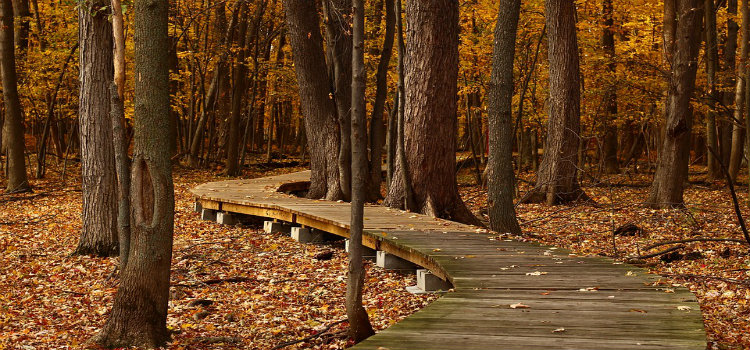New Jersey is a great place for outdoor enthusiasts. The state is filled with various nature preserves, national parks, and other natural landmarks. Troy Meadows is one of our favorite nature destinations in the state. This sprawling 3,100-acre reserve is the largest freshwater marsh in New Jersey and was designated as a National Natural Landmark in 1967. It's also classified as a "Priority Wetland" by the Environmental Protection Agency (EPA). The Whippany River runs through the swamp and connects with the Rockaway River.
Most of Troy Meadows is privately owned by the Wildlife Preserve, and the state of New Jersey owns other areas within the meadows. These meadows are managed as a wildlife sanctuary by Wildlife Preserves and a Natural Area for the preservation of natural diversity by the NJ Division of Parks and Forestry.
When our Parsippany DWI lawyers want to get out and explore nature, we love visiting Troy Meadows. Some of our favorite aspects of this gorgeous nature reserve include:
Protected Wildlife Habitats
Troy Meadows protects habitats for a variety of wildlife, including:
- Reptiles
- Amphibians
- Butterflies
- Mammals
- Migratory Birds
Hiking
The wetlands offer a gorgeous backdrop for a long hike. Birdwatchers can observe migratory waterfowl, while animal lovers of all types can enjoy viewing a wide range of local wildlife and freshwater marsh, swamp, and floodplains. Parsippany is one of the most picturesque examples of cattail marsh in the Northeast and the largest remaining cattail marsh in the state of New Jersey. Hiking here offers breathtaking views. It's also one of few places in New Jersey where you can observe bog turtles in their natural habitat. Woodland ducks also make their home here. At the southern portion of the park's boardwalk, you can find a small river which has washed down sediment along the shores.
Trails at Troy Meadows include:
- The Patriot's Path
- Liberty Trail
- Boardwalk
There's also a pond area featuring Canadian Geese.
Geological History
Troy Meadows is one of many natural sites that are leftover from the ancient Glacial Lake Passaic - the others include the Great Swamp, Black meadows, and Great Piece and Little Piece Meadows. Approximately 400 million years ago, a small, long, and narrow continent collided with North America. When this happened, folding and faulting resulted, which lead to compression. About 350 million years ago, the Africanplatecoollided with North America which created the folding and faulting of the Appalachian Mountains.
Types of Vegetation
Today, you can view a variety of vegetation in this area, such as:
- Trees - You can view at least 23 different tree species here, including boxelder maples, gray birches, shagbark hickories, flowering dogwoods, and much more.
- Shrubs - Troy Meadows features at least 16 different shrubs, which include smooth alder, Japanese barberry, swamp dogwood, Japanese honeysuckle, and more.
- Vines - Seven different vines grow here: hog peanut, dodder, Japanese honeysuckle, climbing false buckwheat, Virginia creeper, poison ivy, and fox grape.
- Herbs - At least 77 different herbs grow here, such as purple gerardia, garlic mustard, Indian hemp, common wintercress, and spring beauty.
- Rushes - Troy Meadows features two types of rushes: soft rush and path rush.
- Sedges - 11 types of sedge are at Troy Meadows, including various sedges, sallow sedges, tussock sedges, flat sedges, spike rush, dark green bulrush, and woolly grass bulrush.
- Grasses - 17 different kinds of grass grow here, including sweet vernal grass, wood reed grass, orchard grass, barnyard grass, and Carolina love grass, among others.
- Ferns and Fern Allies - You can find three types of ferns and fern allies here: field horsetail, sensitive fern, and marsh fern.



